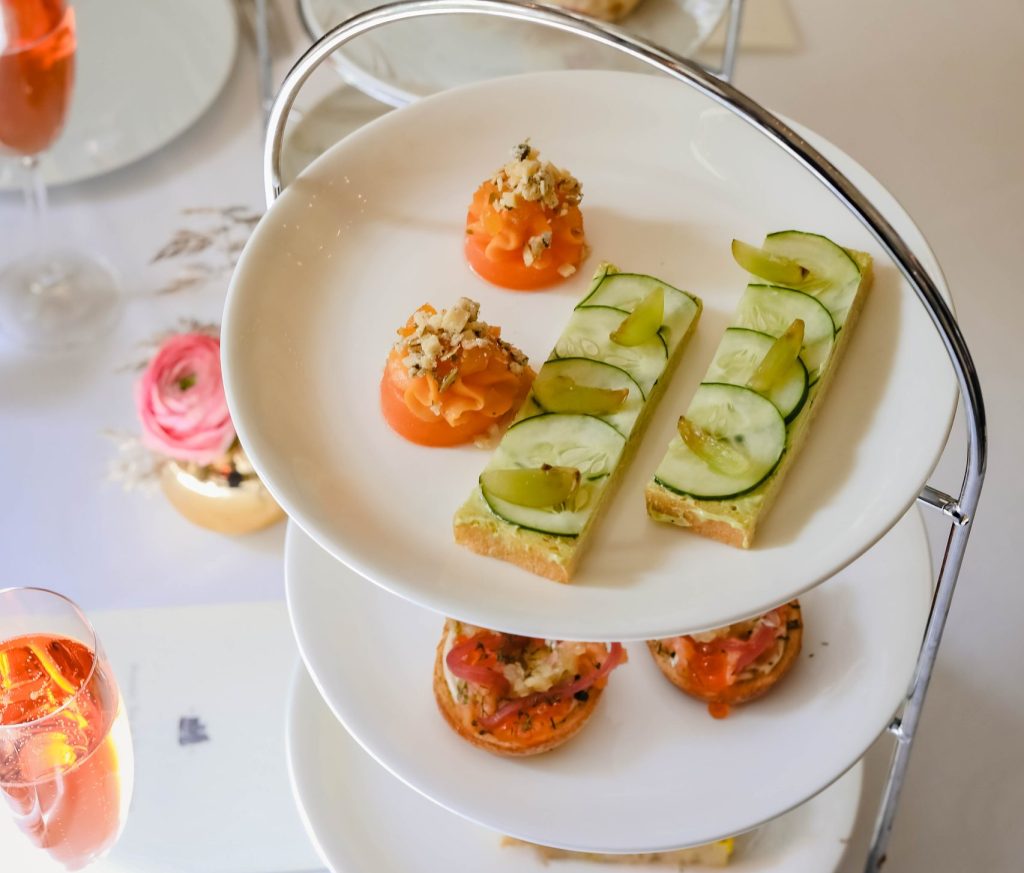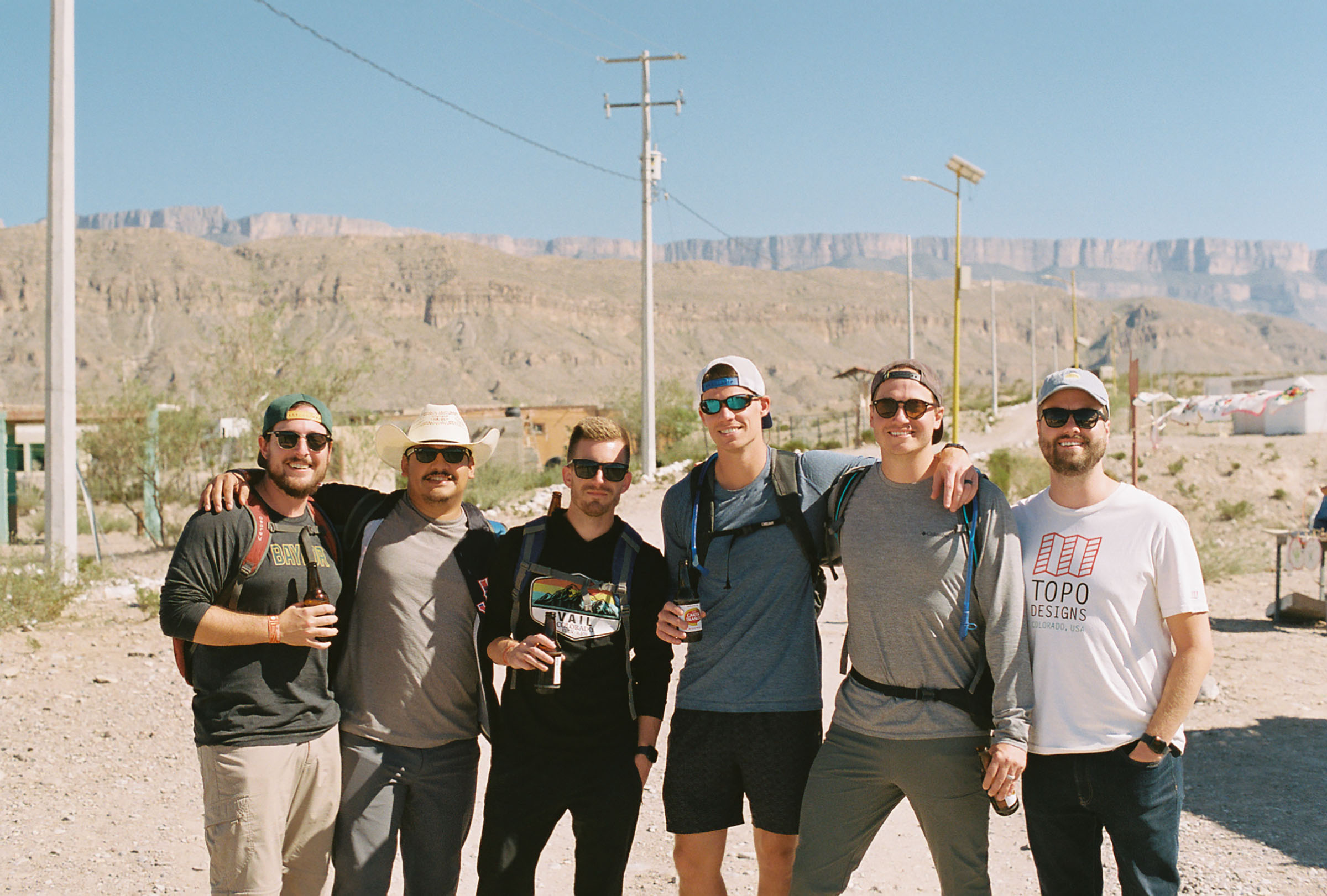
Seven friends explore the Big Bend region’s many attractions.
In a Wal-Mart parking lot in Odessa, gangs of grackles gathered round, squawking their disapproval of our giant Class A 2015 Thor Motor Coach setting up shop in their well-established territory.
We ignored them. We had some Nintendo 64 to play, beers to drink, and sleep to catch up on after a harrowing five-hour drive down an extremely windy Interstate 20 from our Dallas homes. The morning would bring a louder chorus of screams from the grackles, awakening us around sunrise so we could complete the journey down to Terlingua Ranch outside Big Bend National Park, which would become our base camp for the next four days of adventure.
My six friends and I, all men in our 30s who’ve known each other for the better part of the last decade, were on our yearly “camping” trip, and this time we’d decided to join the big leagues. Our first trip was a tent-camping excursion to Arkansas. We loved that—except for the part where we slept on the ground. In the following years, we opted to rent either a cabin or small RV and to stick to campgrounds within a few hours of Dallas.
Big Bend had long been on our list, but the 10-hour drive from Dallas in an RV that can barely get over 70 miles per hour seemed out of our reach. We knew we needed extra time, so we decided to leave at night and drive until we got too tired. That’s how we ended our first night in the middle of a Wal-Mart parking lot on the southwestern edge of the Llano Estacado.
Little did we know it would be the most stable we’d feel in our temporary home for a long time.
Over the edge
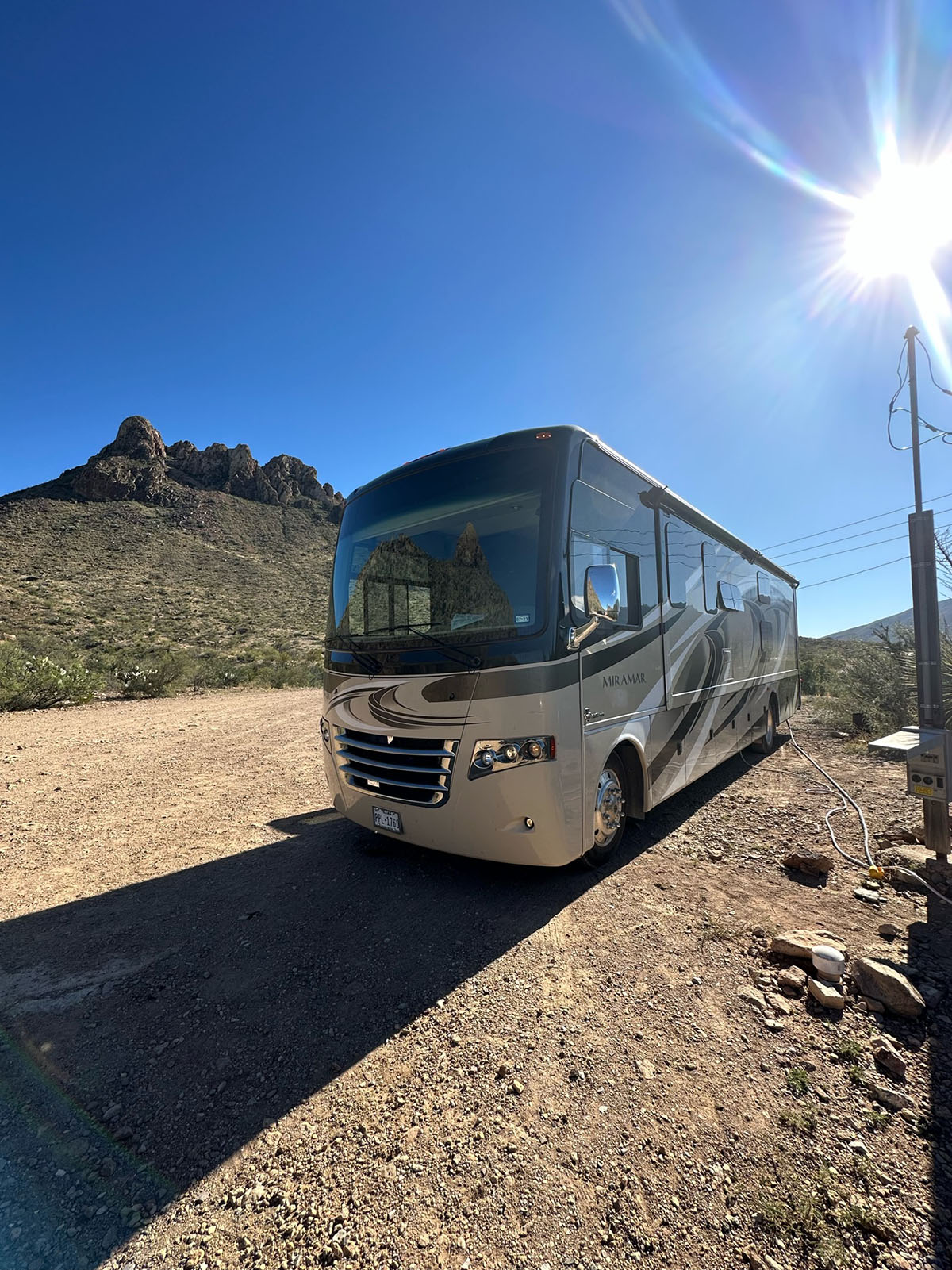
The Class A 2015 Thor Motor Coach that took the group across Texas
“Whoa, whoa, whoa! Hit stop! Hit stop!”
Six of us were shouting at Nathan, the only one left in the RV. He was using the auto-leveling system to set out metal feet from the bottom of the RV, which was supposed to stabilize us in our spot at the Terlingua Ranch RV park. However, instead of stabilizing the RV, it appeared that the metal feet were about to flip the 35-foot bus off the side of a hill. The front right foot kept extending well beyond where it should have, tilting the right side way up, while the left side sat precariously next to a drop off.
Before the vehicle met its seemingly inevitable fate, Nathan realized what was happening and shut it off. But the RV was raised about 8 inches on one side, and the auto-leveling system was broken. This would set off a two-hour-long battle as we tried every method to get the RV unstuck without toppling it over.
Meanwhile, all of our plans for the day were getting pushed. We’d intended to set up camp and immediately head out in the Ford Explorer we brought along for our excursions. The Window Trail, Big Bend’s iconic Chisos Basin hike, was calling our name. But as the sunlight faded, we knew, with our luck, that hiking in the dark was a terrible idea.
Once we got the RV back on its tires—and agreed to keep it on its tires for the rest of the trip—we called an audible and headed into Terlingua for dinner. Terlingua, a former quicksilver mining town, is the closest town to the park entrance. A large portion of it is now considered a ghost town, though there are about 100 year-round residents and plenty of places for tourists to stay.
As we waited for a table at the famed Starlight Theatre Restaurant and Saloon, we enjoyed much-deserved margaritas and palomas and explored the surrounding Terlingua ghost town as the sun set over the Chisos Mountains in the distance. It was a beautiful first night. Things almost never go to plan in the desert. Sometimes you have to just go where the winds take you.
We returned to our temporary home with full bellies and full hearts, which sank right down to our stomachs when we saw massive amounts of water pouring out from under the RV. The thought of all our stuff being flooded and damaged, along with the demise of our lodging and transportation, was too much to bear. We raced to open the door to salvage what we could, only to discover that … the interior was perfectly fine. The water was pouring out from the tank on the bottom, which was an easy fix. Another disaster averted.
A toast to Santa Elena
The next day we set out early, winding along the Window Trail in the morning. The hike is relatively easy to start, as the way to the window is all downhill, but it’s the way back that gets you. We started at the Chisos Basin Visitor Center and made our way down into Oak Creek Canyon. As we wound down the switchbacks we passed several century plants, which prompted me to break out my inner tour guide: “See this big stalk sticking out of this agave plant?” I asked my friends. “This is called a century plant. It grows near the end of the life of the plant and makes this really big, cool tree, but then the plant dies.”
I figured everyone would be impressed by my horticultural knowledge. Instead, every single century plant we passed for the rest of the hike was met with a ”Hey, Scott, what’s this plant called? Is it actually 100 years old? Is it about to die?” Lesson learned: Never try to impress your friends.
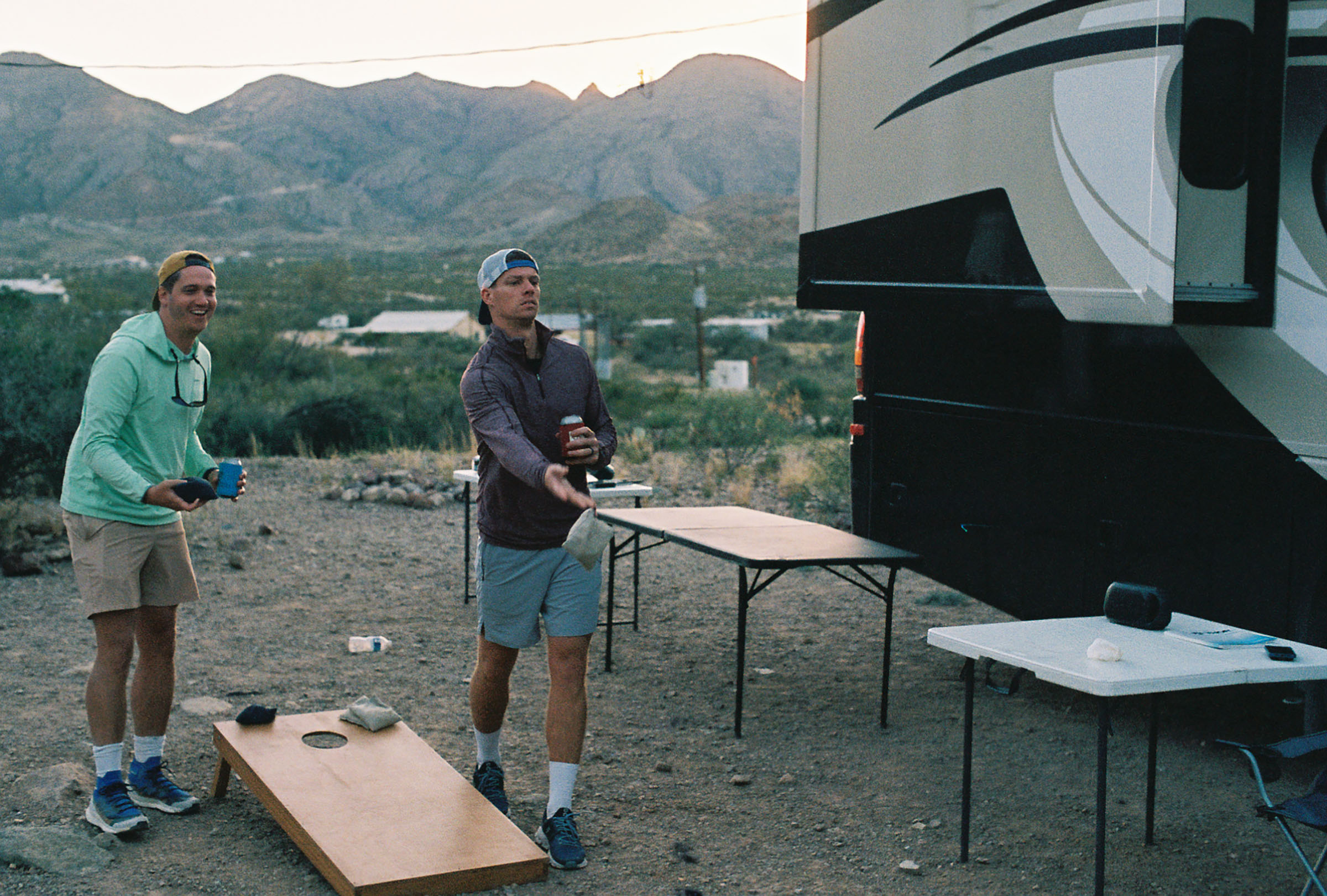
West Texas mountains frame a game of corn hole.
What did impress everyone was the incredible view at the end of the trail, where a stream cuts through the rock and provides hikers a framed view of Mexico.
We returned to the car, piled seven hungry and sweaty men into a Ford Explorer, and drove the long, windy road down to Santa Elena Canyon.
Santa Elena is split by the Rio Grande. One side is in Big Bend, and the other side is the Cañón de Santa Elena Flora and Fauna Protection Area in Mexico. Seeing the Rio Grande, the most talked about, debated, newsworthy river in the United States up close is a bit like seeing a celebrity in person; when you finally get close to them, you realize they are just regular humans like you. The Rio Grande is just like any other river; its significance comes from human decisions. But that fact doesn’t remove its mystique.
We hiked the Santa Elena Canyon Trail that takes you up along the canyon walls and down toward the river. A rock outcropping juts about 20 feet into the river, and there we sat to admire the view. We broke out a bottle of sotol, the drink of the desert, and poured everyone a shot. We toasted to Santa Elena, whoever she was, to Texas, and to the great hope that our RV was still in one piece when we returned.
Maybe it was the sotol toast or maybe we were finally getting good at this RV thing, but there were no disasters awaiting us upon our return. Finally, the winds were blowing in our favor.
Burros in Boquillas
Boquillas del Carmen, Mexico, sits across the border from the park and is a popular day trip for visitors to Big Bend. In fact, the border crossing station is inside the national park and is staffed by park rangers. We showed them our passports and walked down to the river. There, two men in jon boats ferried us across the river. The national park’s website says that it costs $5 a person to cross, but it was $10 when we were there.
Once he rowed us across, we encountered a group of men, ranging from young teenagers to 60-year-olds, that runs the horse and donkey stables. We paid another $10 for a burro—horses come at a higher price, and visitors can walk the half-mile for free—and then saddled up and rode down to the village. We hopped aboard our burros, who knew the way instinctively.
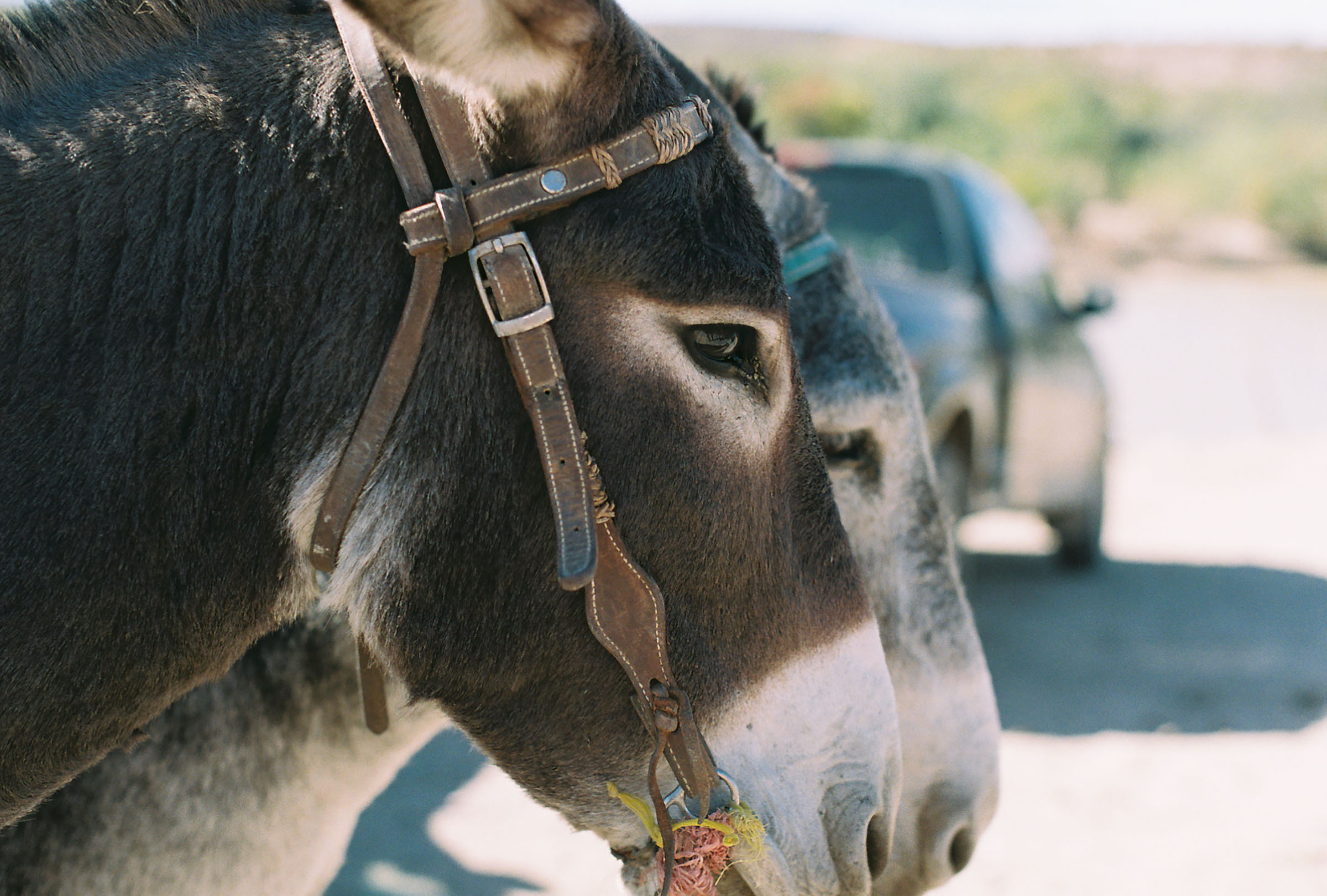
Donkeys and horses are available to take visitors to town once they cross the Rio Grande.
Though Boquillas is a tiny village of fewer than 200 people, we had the choice of two restaurants. We ate lunch at Jose Falcon’s where we enjoyed the view over the river and a few vampiros, a cocktail of sangria and tequila. Then we ambled down to Park Bar, which takes a minimalist approach to décor. It’s an empty concrete room with a bar and two pool tables. There we drank cheap Carta Blanca, the only beer available, and shots of Mexican sotol unavailable in the U.S.
Eventually we began the long and slow process of heading home. We started with the burros and boats, transferred to the cramped quarters of the Explorer, slept one more night in the RV, then packed and drove 10 hours straight to Dallas. Like all good camping trips, even ones that begin in Wal-Mart parking lots, getting home was the worst part, but the memories of great times under the desert sky made all the travel worth it in the end.
